
Luke Hughes is an English furniture designer specialising in furniture for public buildings including Westminster Abbey. [1]

Luke Hughes is an English furniture designer specialising in furniture for public buildings including Westminster Abbey. [1]
Hughes was temporarily working as a carpenter on London building sites in 1979 when chosen to lead a design project for kitchen shelving, which led further to the refurbishment of the client's home library. [2] This was the first library project that led to a series of bookcase designs and installations for Inns of Court lawyers. [3] He set up his first company, Bloomsbury Joinery, in 1980 in Lamb's Conduit Street, Bloomsbury. [2]

Hughes is the founder and CEO of Luke Hughes and Company Limited, [4] which went out of business in May 2024. Luke Hughes’ early output consisted of furniture for the residential market. [2] The same period also saw Hughes’ short-lived engagement with designing for the retail market. This came in the form of the ill-fated Ovolo line of bedroom furniture, originally manufactured by a Birmingham reproduction furniture company, Juckes, and sold through Heal's, Liberty's and John Lewis.[ citation needed ] The line's failure to gain a foothold with the consumer forced a change to the targeting of institutional clients. [3] To that end, Hughes brought architect and former managing director of Cotswold Furniture Manufacturers, Gordon Russell, on board. [5]
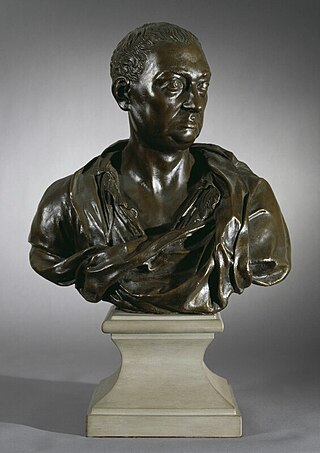
Nicholas Hawksmoor was an English architect. He was a leading figure of the English Baroque style of architecture in the late-seventeenth and early-eighteenth centuries. Hawksmoor worked alongside the principal architects of the time, Christopher Wren and John Vanbrugh, and contributed to the design of some of the most notable buildings of the period, including St Paul's Cathedral, Wren's City of London churches, Greenwich Hospital, Blenheim Palace and Castle Howard. Part of his work has been correctly attributed to him only relatively recently, and his influence has reached several poets and authors of the twentieth century.

Bloomsbury is a district in the West End of London, part of the London Borough of Camden in England. It is considered a fashionable residential area, and is the location of numerous cultural, intellectual, and educational institutions. Bloomsbury is home of the British Museum, the largest museum in the United Kingdom, and several educational institutions, including University College London and a number of other colleges and institutes of the University of London as well as its central headquarters, the New College of the Humanities, the University of Law, the Royal Academy of Dramatic Art, the British Medical Association and many others. Bloomsbury is an intellectual and literary hub for London, as home of world-known Bloomsbury Publishing, publishers of the Harry Potter series, and namesake of the Bloomsbury Group, a group of British intellectuals which included author Virginia Woolf, biographer Lytton Strachey, and economist John Maynard Keynes.

Sir Giles Gilbert Scott was a British architect known for his work on the New Bodleian Library, Cambridge University Library, Lady Margaret Hall, Oxford, Battersea Power Station, Liverpool Cathedral, and designing the iconic red telephone box.
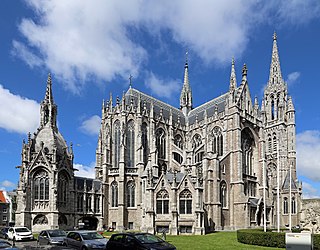
Gothic Revival is an architectural movement that after a gradual build-up beginning in the second half of the 17th century became a widespread movement in the first half of the 19th century, mostly in England. Increasingly serious and learned admirers sought to revive medieval Gothic architecture, intending to complement or even supersede the neoclassical styles prevalent at the time. Gothic Revival draws upon features of medieval examples, including decorative patterns, finials, lancet windows, and hood moulds. By the middle of the 19th century, Gothic Revival had become the pre-eminent architectural style in the Western world, only to begin to fall out of fashion in the 1880s and early 1890s.
John James was a British architect particularly associated with Twickenham in west London, where he rebuilt St Mary's Church and also built a house for James Johnson, Secretary of State for Scotland, later Orleans House and since demolished. Howard Colvin's assessment of him was that of "a competent architect, but he lacked inventive fancy, and his buildings are for the most part plain and unadventurous in design".
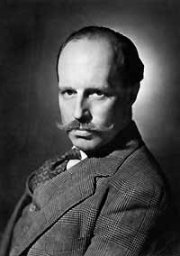
Sir Basil Urwin Spence, was a Scottish architect, most notably associated with Coventry Cathedral in England and the Beehive in New Zealand, but also responsible for numerous other buildings in the Modernist/Brutalist style.

Eileen Gray was an Irish architect with no formal training and furniture designer who became a pioneer of the Modern Movement in architecture. Over her career, she was associated with many notable European artists of her era, including Kathleen Scott, Adrienne Gorska, Le Corbusier, and Jean Badovici, with whom she was romantically involved. Her most famous work is the house known as E-1027 in Roquebrune-Cap-Martin, France.

Marcel Lajos Breuer was a Hungarian-German modernist architect and furniture designer. He moved to the United States in 1937 and became a naturalized American citizen in 1944.
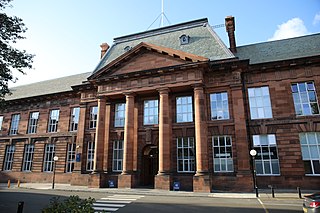
Edinburgh College of Art (ECA) is one of eleven schools in the College of Arts, Humanities and Social Sciences at the University of Edinburgh. Tracing its history back to 1760, it provides higher education in art and design, architecture, history of art, and music disciplines for over three thousand students and is at the forefront of research and research-led teaching in the creative arts, humanities, and creative technologies. ECA comprises five subject areas: School of Art, Reid School of Music, School of Design, School of History of Art, and Edinburgh School of Architecture & Landscape Architecture (ESALA). ECA is mainly located in the Old Town of Edinburgh, overlooking the Grassmarket; the Lauriston Place campus is located in the University of Edinburgh's Central Area Campus, not far from George Square.

Parliament House, located in the Old Town in Edinburgh, Scotland, is a complex of several buildings housing the Supreme Courts of Scotland. The oldest part of the complex was home to the Parliament of Scotland from 1639 to 1707, and is the world's first purpose-built parliament building.

The Hub is a public arts and events building in the centre of Edinburgh, Scotland. Located at the top of the Royal Mile, it is a prominent landmark as its tall Gothic spire is the highest point in central Edinburgh, and towers over the surrounding buildings below Edinburgh Castle.

Tatlinʼs Tower, or the project for the Monument to the Third International (1919–20), was a design for a grand monumental building by the Russian artist and architect Vladimir Tatlin, that was never built. It was planned to be erected in Petrograd after the October Revolution of 1917, as the headquarters and monument of the Communist International.

Neoclassical architecture, sometimes referred to as Classical Revival architecture, is an architectural style produced by the Neoclassical movement that began in the mid-18th century in Italy, France and Germany. It became one of the most prominent architectural styles in the Western world. The prevailing styles of architecture in most of Europe for the previous two centuries, Renaissance architecture and Baroque architecture, already represented partial revivals of the Classical architecture of ancient Rome and ancient Greek architecture, but the Neoclassical movement aimed to strip away the excesses of Late Baroque and return to a purer and more authentic classical style, adapted to modern purposes.

Sir Robert Stodart Lorimer, KBE was a prolific Scottish architect and furniture designer noted for his sensitive restorations of historic houses and castles, for new work in Scots Baronial and Gothic Revival styles, and for promotion of the Arts and Crafts movement.
Giles Alexander Esmé Gordon was a Scottish literary agent and writer, based for most of his career in London.

Watts & Co. is a prominent architecture and interior design company established in England in 1874. It is a survivor from the Gothic Revival of the nineteenth century: a firm founded in 1874 by three leading late-Victorian church architects – George Frederick Bodley, Thomas Garner and Gilbert Scott the younger – to produce furniture, textiles, stained glass windows, and needlework in a style distinctively their own.
ABK Architects is an architectural practice.
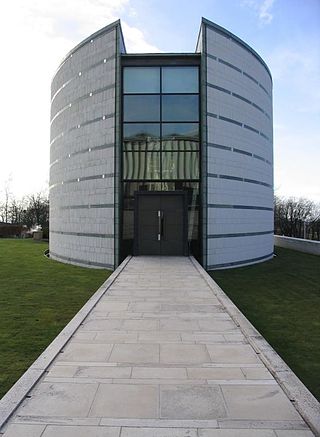
Sir Richard Cornelius MacCormac CBE, PPRIBA, FRSA, RA, was a modernist English architect and the founder of MJP Architects.

James Austin is an Australian fine-art and architectural photographer.
Sir Mervyn E. Macartney FSA FRIBA was a British architect and Surveyor of the Fabric of St Paul's Cathedral between 1906 and 1931. Macartney was a leading figure in the Arts and Craft movement, being a founder of the Art Workers' Guild and the Arts and Crafts Exhibition Society, and an influential voice as the editor of The Architectural Review and via his publications The Practical Exemplar of Architecture and Later Renaissance Architecture in England with John Belcher.